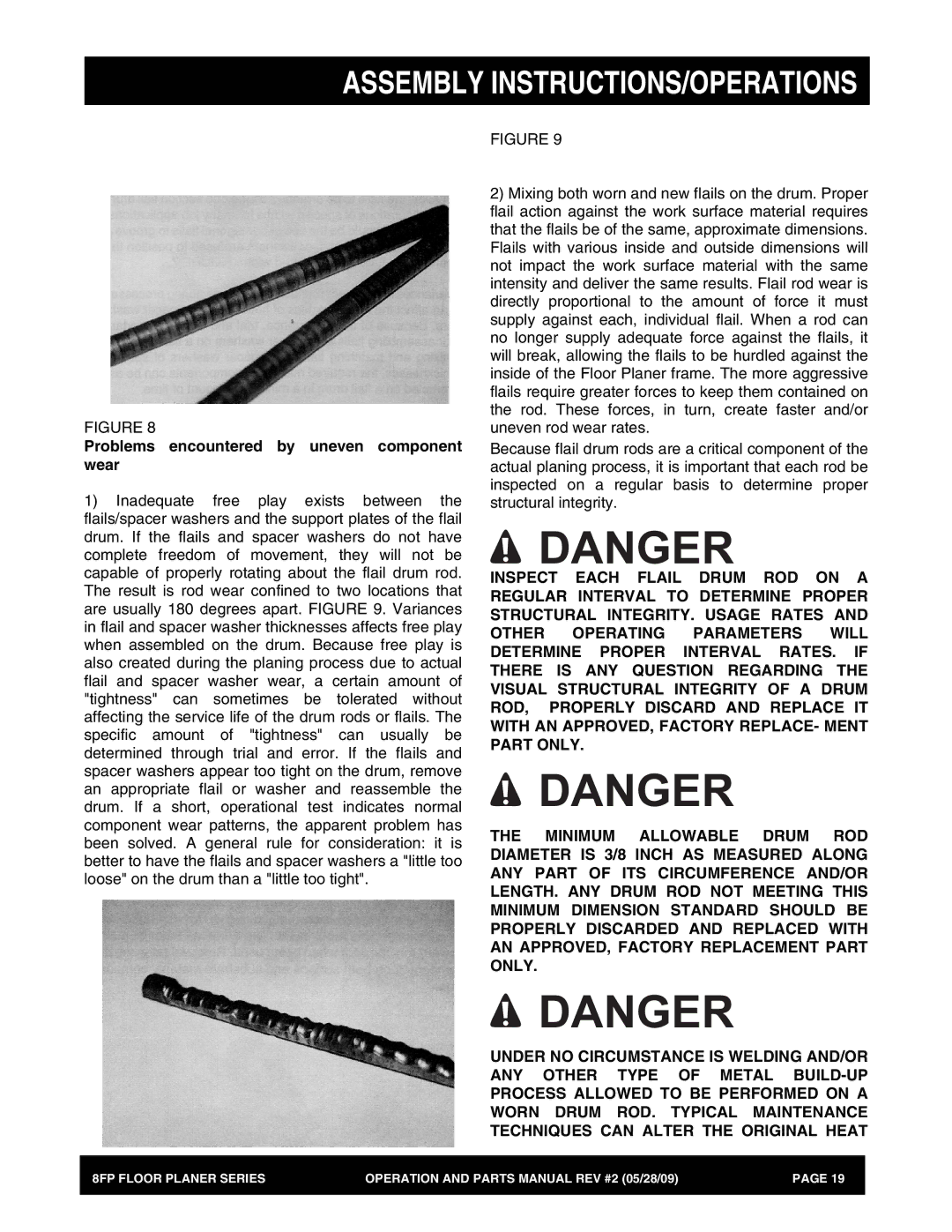
ASSEMBLY INSTRUCTIONS/OPERATIONS
FIGURE 8
Problems encountered by uneven component wear
1)Inadequate free play exists between the flails/spacer washers and the support plates of the flail drum. If the flails and spacer washers do not have complete freedom of movement, they will not be capable of properly rotating about the flail drum rod. The result is rod wear confined to two locations that are usually 180 degrees apart. FIGURE 9. Variances in flail and spacer washer thicknesses affects free play when assembled on the drum. Because free play is also created during the planing process due to actual flail and spacer washer wear, a certain amount of "tightness" can sometimes be tolerated without affecting the service life of the drum rods or flails. The specific amount of "tightness" can usually be determined through trial and error. If the flails and spacer washers appear too tight on the drum, remove an appropriate flail or washer and reassemble the drum. If a short, operational test indicates normal component wear patterns, the apparent problem has been solved. A general rule for consideration: it is better to have the flails and spacer washers a "little too loose" on the drum than a "little too tight".
FIGURE 9
2)Mixing both worn and new flails on the drum. Proper flail action against the work surface material requires that the flails be of the same, approximate dimensions. Flails with various inside and outside dimensions will not impact the work surface material with the same intensity and deliver the same results. Flail rod wear is directly proportional to the amount of force it must supply against each, individual flail. When a rod can no longer supply adequate force against the flails, it will break, allowing the flails to be hurdled against the inside of the Floor Planer frame. The more aggressive flails require greater forces to keep them contained on the rod. These forces, in turn, create faster and/or uneven rod wear rates.
Because flail drum rods are a critical component of the actual planing process, it is important that each rod be inspected on a regular basis to determine proper structural integrity.
![]() DANGER
DANGER
INSPECT EACH FLAIL DRUM ROD ON A REGULAR INTERVAL TO DETERMINE PROPER STRUCTURAL INTEGRITY. USAGE RATES AND OTHER OPERATING PARAMETERS WILL DETERMINE PROPER INTERVAL RATES. IF THERE IS ANY QUESTION REGARDING THE VISUAL STRUCTURAL INTEGRITY OF A DRUM ROD, PROPERLY DISCARD AND REPLACE IT WITH AN APPROVED, FACTORY REPLACE- MENT PART ONLY.
![]() DANGER
DANGER
THE MINIMUM ALLOWABLE DRUM ROD DIAMETER IS 3/8 INCH AS MEASURED ALONG ANY PART OF ITS CIRCUMFERENCE AND/OR LENGTH. ANY DRUM ROD NOT MEETING THIS MINIMUM DIMENSION STANDARD SHOULD BE PROPERLY DISCARDED AND REPLACED WITH AN APPROVED, FACTORY REPLACEMENT PART ONLY.
![]() DANGER
DANGER
UNDER NO CIRCUMSTANCE IS WELDING AND/OR ANY OTHER TYPE OF METAL
8FP FLOOR PLANER SERIES | OPERATION AND PARTS MANUAL REV #2 (05/28/09) | PAGE 19 |
|
|
|
